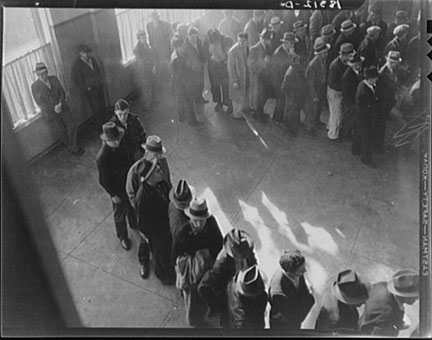Dorothea Lange, photograph, Unemployment benefits aid begins. Line of men inside a division office of the State Employment Service office at San Francisco, California, January, 1938, Library of Congress photograph on Agfa Portriga paper, Collection of de Saisset Museum, Santa Clara University, NDA.6.700The Stock Market Crash in 1929, which triggered the Great Depression, was followed by bank runs, massive unemployment, farm foreclosures, and a severe drought that led to the Dust Bowl in the Midwest. The cities and the countryside were full of poor people. In 1929, unemployment stood at 3%, and by 1933 it had risen to 25%.
Pele de Lappe, The Transients, Lithograph, 1938Fascism was on the rise in Europe and right-wing forces were making gains in the U.S. When Franklin Delano Roosevelt became president in 1933, his administration drew on the energy and activism of countless people in an effort to rebuild the collapsed economy and envision a democratic cultural sphere. In the process, FDR ushered in a new and dynamic relationship between artists and the government that lasted until the early years of World War II.
-Art Hazelwood, curator
